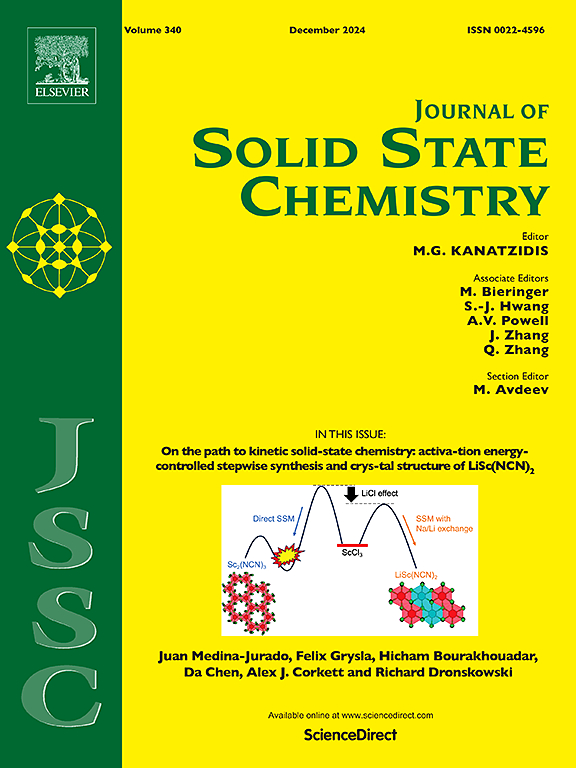Lead-free double halide perovskite Cs2AgBiI6/g-C3N4 heterojunction photocatalysts for effective visible-light photocatalytic activity
IF 3.2
3区 化学
Q2 CHEMISTRY, INORGANIC & NUCLEAR
引用次数: 0
Abstract
Perovskites are known for their exceptional photocatalytic properties, owing to their unique optoelectronic characteristics and structural versatility. However, the inherent instability and toxicity of conventional perovskites have restricted their practical application. The development of double perovskite materials has successfully addressed some of these issues. Nevertheless, problems such as significant charge recombination and slow surface catalytic reactions continue to hinder their practical application. In this study, we develop a novel and highly efficient composite, the Cs2AgBiI6/g-C3N4 (CABI/CN) heterojunction photocatalyst, synthesized through a simple anti-solvent recrystallization process. Under visible light (λ ≥ 420 nm, 300 W Xe lamp), the CABI/CN-20 composite achieved 97 % degradation of rhodamine B in 180 min, outperforming Cs2AgBiI6 by a factor of 1.3. In contrast, g-C3N4 showed minimal degradation under the same conditions. The enhanced photocatalytic performance of the CABI/CN-20 heterojunction is attributed not only to improved charge separation efficiency within the photocatalyst but also to the facilitation of photogenerated carrier transfer across the heterojunction interface due to the potential difference. Consequently, this leads to optimal redox capacity and significantly enhances the photocatalytic degradation performance. This study introduces novel methods for synthesizing Cs2AgBiI6/g-C3N4 heterojunctions and emphasizes their efficient separation of photogenerated carriers.

无铅双卤化物钙钛矿Cs2AgBiI6/g-C3N4异质结光催化剂的有效可见光光催化活性
由于具有独特的光电特性和结构多样性,过氧化物以其卓越的光催化特性而闻名。然而,传统的过氧化物本身的不稳定性和毒性限制了它们的实际应用。双包晶石材料的开发成功地解决了其中的一些问题。然而,电荷大量重组和缓慢的表面催化反应等问题仍然阻碍着它们的实际应用。在本研究中,我们开发了一种新型高效复合材料--Cs2AgBiI6/g-C3N4(CABI/CN)异质结光催化剂,它是通过简单的反溶剂重结晶工艺合成的。在可见光(λ ≥ 420 nm,300 W Xe 灯)下,CABI/CN-20 复合材料在 180 分钟内实现了 97% 的罗丹明 B 降解,比 Cs2AgBiI6 高出 1.3 倍。相比之下,g-C3N4 在相同条件下的降解率极低。CABI/CN-20 异质结光催化性能的增强不仅归功于光催化剂内部电荷分离效率的提高,还归功于电位差促进了光生载流子在异质结界面上的转移。因此,这导致了最佳的氧化还原能力,并显著提高了光催化降解性能。本研究介绍了合成 Cs2AgBiI6/g-C3N4 异质结的新方法,并强调了它们对光生载流子的有效分离。
本文章由计算机程序翻译,如有差异,请以英文原文为准。
求助全文
约1分钟内获得全文
求助全文
来源期刊

Journal of Solid State Chemistry
化学-无机化学与核化学
CiteScore
6.00
自引率
9.10%
发文量
848
审稿时长
25 days
期刊介绍:
Covering major developments in the field of solid state chemistry and related areas such as ceramics and amorphous materials, the Journal of Solid State Chemistry features studies of chemical, structural, thermodynamic, electronic, magnetic, and optical properties and processes in solids.
 求助内容:
求助内容: 应助结果提醒方式:
应助结果提醒方式:


